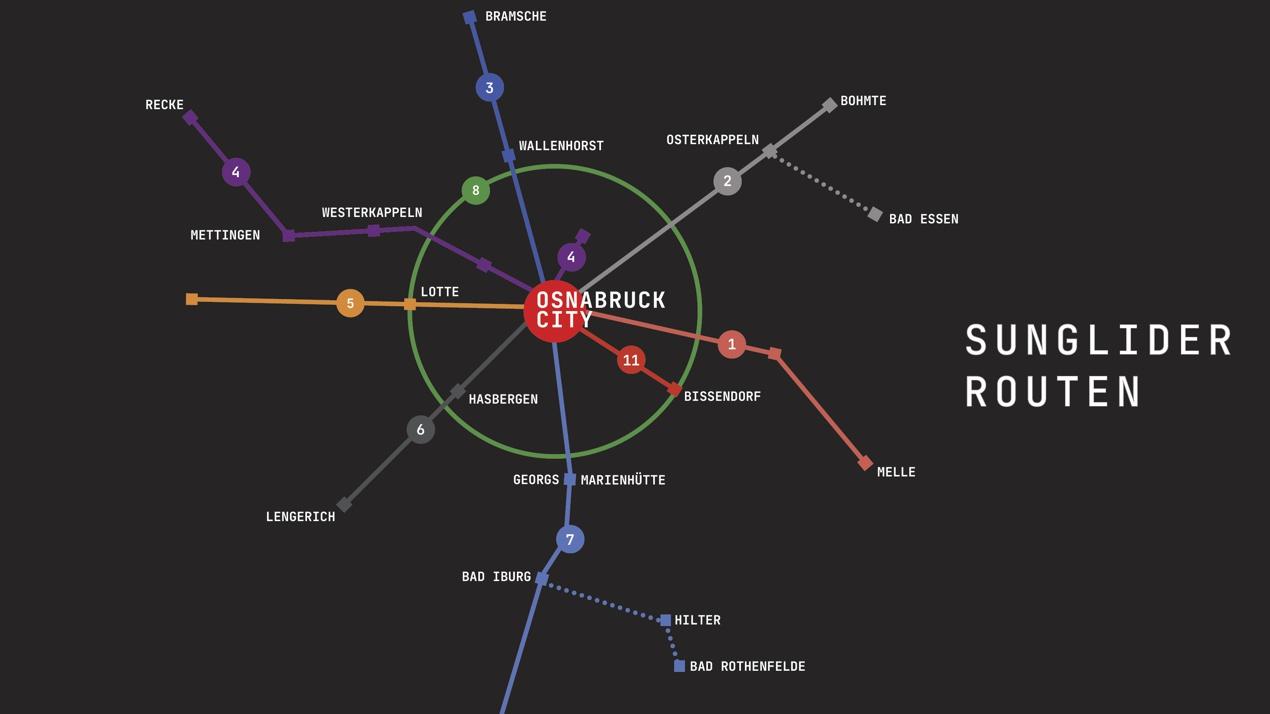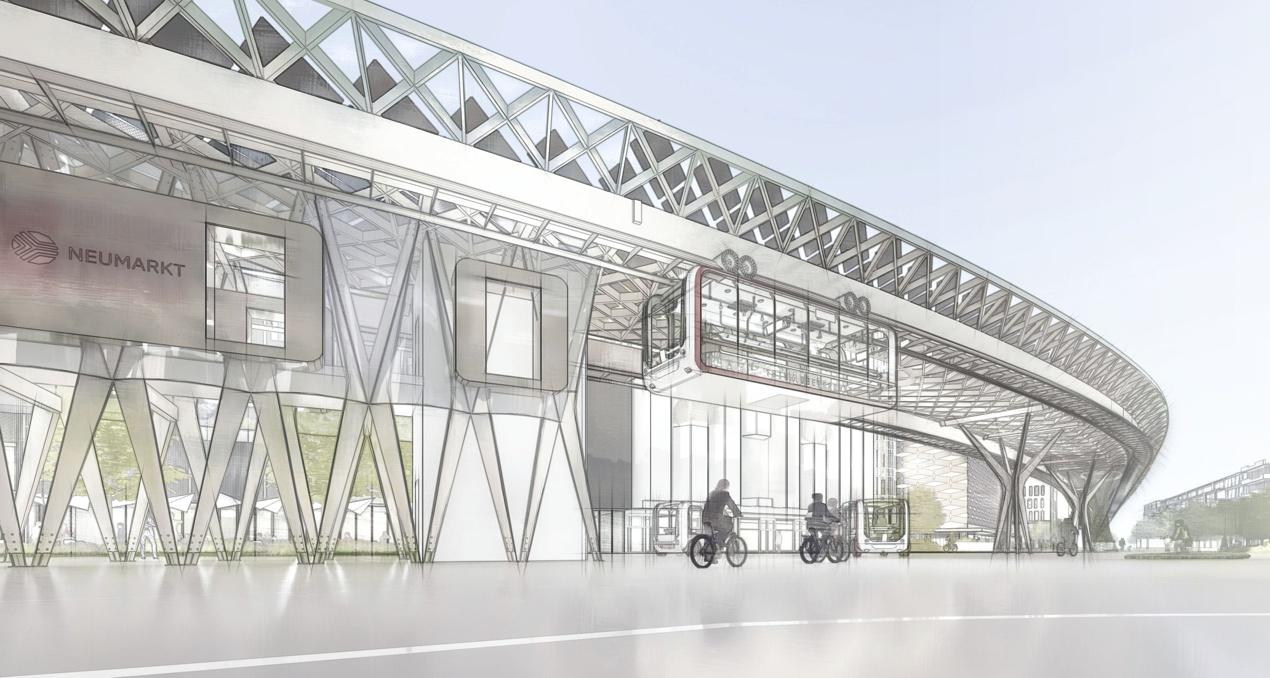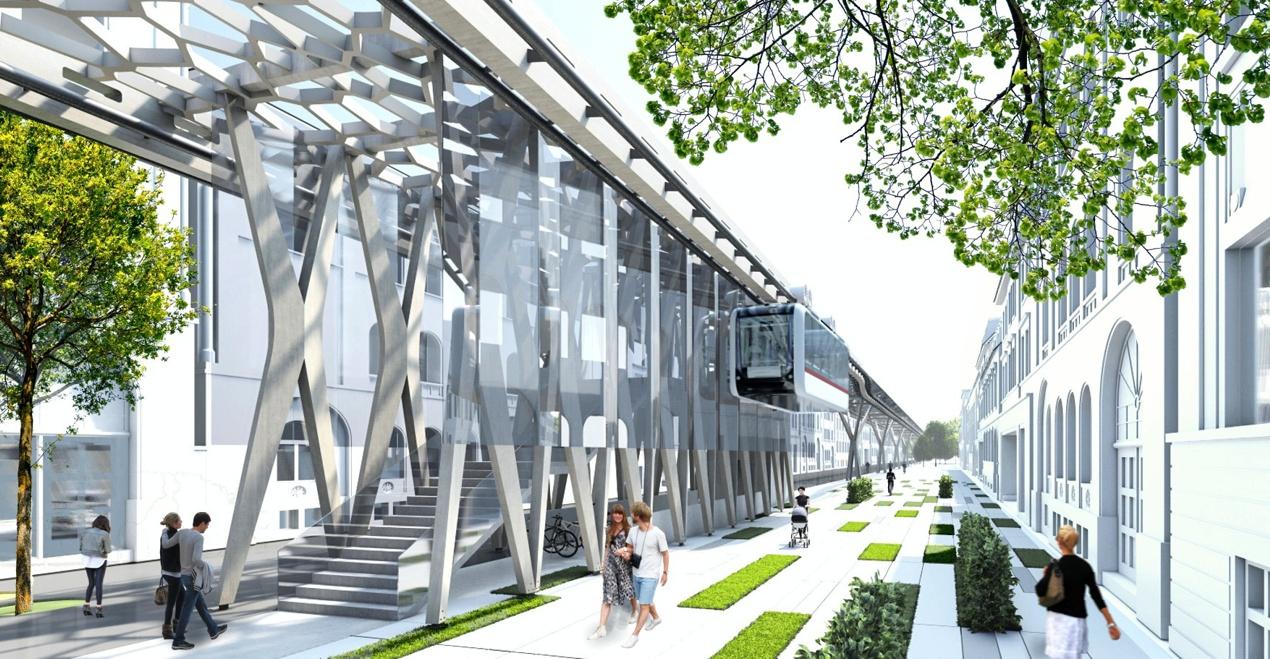
A metro for mezzopolis
The Sunglider is focused on medium-sized urban regions between 600,000 and 1 million inhabitants, typical for Europe. We call this urban phenomenon »mezzopolis«. It is often characterized by poor transport infrastructure. These areas urgently need new public transport impulses. Osnabrück is a prototype for this.
The fast gliding people movers (PANOS) connect the smaller towns in the surrounding area with the centre with radial lines. A circle line surrounds the historical centre (here on »Osnabruck’s Wall«). A large circle connects the centres of the surrounding area with each other. The metro is thus creating a new type of urbanity. It reinforces the towns in the periphery, it makes the centre more attractive and integrates the so called »rural« periphery into the completely new type of urbanity of the mezzopolis.

A metro for the last mile
In addition to the +1 lines, the Sunglider metro also supplies ground traffic on the »last mile«. Small autonomous KATOS buses will be waiting at each stop to take passengers to their destinations free of charge. Or they can be picked up by KATOS. One push if a button in the Sunglider app is all it takes to make a KATOS come around.
However, if you prefer to ride a bike, the Sunglider Metro offers smart e-bikes, which will also be waiting at every stop. You can also use your own bike - and take it with you. But you don't have to do that, because at every destination there is a well-maintained and charged e-bike waiting for environmentally conscious bike owners. The e-bikes can be booked via the Sunglider app. The Sunglider is the true ally of eco-friendly passengers.

A metro without waiting
A good metro is not long in coming. The next train has to arrive within 5 minutes. This is a big challenge for the controlling of the Metro which can only be solved by powerful »artificial intelligence« (AI). The Sunglider metro uses an innovative AI tool based on IBM Watson. That is the virtual controller, the "conductor" software of the metro. The »Sunglider Conductor« software ensures that gliders and buses are always optimally timed. They will always be "just in time". Nobody will have to wait longer than 5 minutes - not even at night.
On the other hand: If there is no need, gliders and buses will not run. The AI learns when exactly to deliver and when not. During idle times, the »Sunglider Conductor« creates space for Sunglider-Cargo traffic. In addition, the AI controls the stops and takes care of the automatic maintenance of the Xylo-Solar Route by using small repair robots.

The first step
Over the distance of approx. 3 miles, we aim to install a fully functional pilot route in Osnabrück on Martini Straße and Kurt-Schumacher-Damm. The roads connect Osnabruck's Neumarkt and the district of Hellern. We plan to hand it over to the Osnabrück public utility company for commercial operation and maintenance. The two streets are excellently suited for such a pilot installation, as the above vision of Martini Strasse in 2030 proves (created by Peter Kuczia). To do so, we necessarily have to carry out a feasibility study that has already been subsidized with 50% of the total costs by the state of Lower Saxony.
We consider the financing of the pilot construction to be sustainably viable after independent auditors will have provided a full proof of concept and after the federal funding under the relevant German public transport support legislation will have been successfully obtained.
